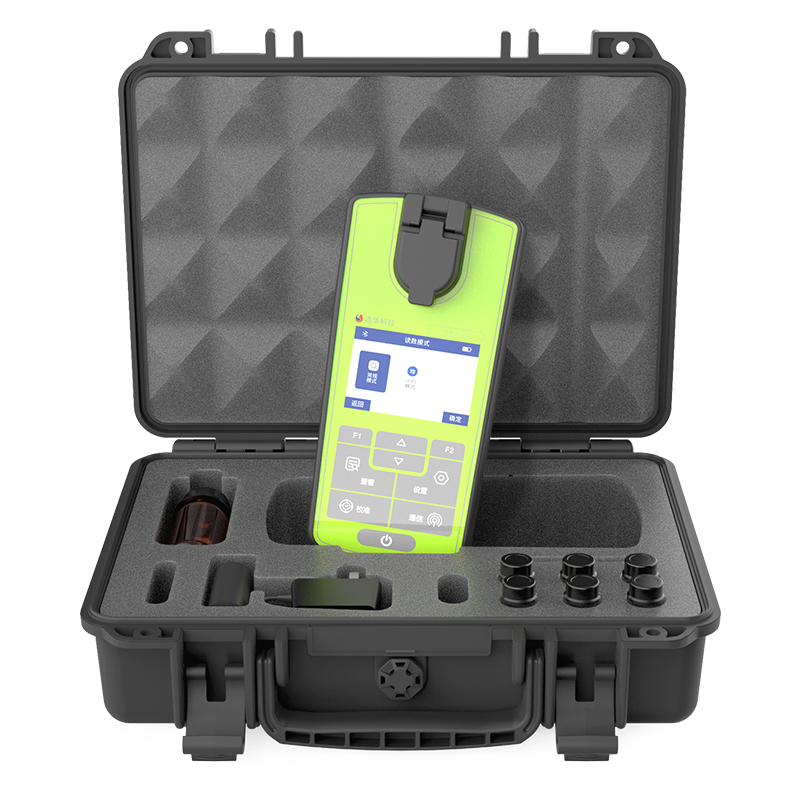What is a Nephelometric Turbidity Meter and How Does It Work?
Understanding the Nephelometric Turbidity Meter and Its Role in Water Quality

Definition and Purpose of a Nephelometric Turbidity Meter
Nephelometric turbidity meters work by measuring how much light gets scattered when it passes through water containing stuff like silt, algae, and tiny organisms. The results are given in what's called Nephelometric Turbidity Units or NTUs for short. These readings help track down potential contamination problems in our drinking water supplies pretty much right away. Why does this matter so much? Well, water treatment plants have to follow strict rules set by agencies like the EPA. For instance, they need to make sure that at least 95 out of every 100 monthly tests show turbidity levels under 0.5 NTU. Getting accurate measurements isn't just about meeting paperwork requirements either it actually keeps people safe from harmful contaminants that might otherwise go unnoticed.
How Turbidity Measurement Supports Water Quality Assessment
Turbidity analysis directly impacts public health and infrastructure efficiency. High turbidity correlates with increased pathogen survival rates and higher chemical treatment costs—levels above 1 NTU can raise filtration expenses by 40% (USGS 2022). Continuous monitoring enables water treatment plants to optimize coagulation processes while meeting safety standards.
The Science of Light Scattering in Nephelometric Analysis
The meter’s optical system uses a 90-degree detector to measure scattered light intensity, which increases proportionally with particle concentration. This configuration, standardized in ISO 7027 and EPA Method 180.1, minimizes interference from dissolved colored compounds compared to older absorption-based methods. Modern instruments achieve ±0.02 NTU resolution through advanced signal processing.
Core Principles and Standards Behind Nephelometric Turbidity Measurement
Nephelometry vs. Other Turbidity Measurement Techniques
The nephelometric turbidity meter works by detecting light scattered at a 90 degree angle, which sets it apart from older approaches like the Jackson Turbidity Unit method that relied on comparing samples visually against a standard. Another outdated technique measured how much light was lost passing through the sample. These newer nephelometers can spot tiny particles down to about 0.1 microns with pretty good accuracy around 95% according to research published in Environmental Science & Technology back in 2022. That makes them especially useful when monitoring drinking water where turbidity levels tend to be quite low. For industrial settings where water gets really murky, backscatter and ratio turbidimeters work better overall, though they just don't have the kind of precision needed to meet regulations for safe drinking water standards.
90-Degree Light Scatter Detection in the Nephelometric Turbidity Meter
When light hits particles smaller than their own wavelength, it scatters at around 90 degrees. These tiny particles are actually what we find most commonly in natural water systems. The 90 degree measurement setup works really well because it picks up this scattered light better than other angles do, plus it doesn't get confused by colors in the sample. Most instruments on the market today come with either infrared LED lights following ISO standard 7027 specifications or traditional tungsten bulbs according to EPA method 180.1. Either way they're connected to detectors that can spot incredibly small differences in turbidity down to just 0.01 NTU units. This kind of precision matters a lot when testing water quality standards across different industries.
| Standard | Light Source | Detection Range | Typical Applications |
|---|---|---|---|
| ISO 7027 | 860 nm LED | 0–1000 FNU | International drinking water |
| EPA 180.1 | 400–600 nm Lamp | 0–40 NTU | US municipal water systems |
Calibration Using Formazin and the NTU Standard
When it comes to calibration standards, formazin polymer suspensions have become pretty much the industry benchmark because they offer really consistent particle sizes throughout. Mixing a solution of 1.25 mg\/L hydrazine sulfate creates precisely what we call 1 NTU turbidity units, something that can be traced back to those official NIST certified references everyone relies on. Now most instruments that follow ISO standards actually display readings in FNU instead, which stands for Formazin Nephelometric Units. But don't worry too much about the difference since for all practical purposes, these FNU values work just like regular NTUs when dealing with clear water samples under around 40 NTU concentration levels.
Compliance with ISO 7027 and EPA Method 180.1
Following ISO 7027 standards helps equipment work across different countries' regulations, which matters a lot in international operations. For American cities though, they have to stick to EPA Method 180.1 requirements when dealing with water treatment systems. The main thing that sets these apart? How they handle light sources. ISO specs call for infrared LEDs because they cut down on color problems that can mess up readings. The EPA standard goes old school with visible range lamps instead, probably just keeping things consistent with what's been done for decades. No matter which one gets used though, there's this annual checkup needed with something called Formazin solution. And if measurements drift more than 5% from expected values during testing, then the whole system fails certification. Makes sense really – nobody wants inaccurate data coming out of their water quality monitoring gear.
Key Components and Design Features of Modern Nephelometric Turbidity Meters
Light Source Options: LEDs, Tungsten Lamps, and Infrared Systems
Today's measuring devices typically incorporate tungsten lamps when following EPA Method 180.1 requirements, switch to LEDs where energy savings matter, and rely on infrared systems around 860 nm wavelength to satisfy ISO 7027 guidelines. The shift toward infrared LEDs has become pretty standard in newer equipment because they handle colored samples better and aren't as bothered by ambient lighting conditions. Take portable turbidimeters for example many manufacturers have started combining these infrared LEDs with MEMS components to keep measurements accurate even out in the field where lab conditions just aren't possible.
Detector Sensitivity and Optical Alignment
Precision depends on 90-degree photodetectors that capture scattered light while rejecting stray signals. High-sensitivity silicon photodiodes with ±1° angular tolerance achieve resolutions below 0.01 NTU. Baffles and anti-reflective coatings further minimize optical noise, ensuring reliability in low-turbidity applications such as filtered drinking water.
Sample Chamber Design to Minimize Interference
Flow-through cells with quartz glass windows and laminar flow paths prevent bubble formation—a key concern since a 1 mm air pocket can skew readings by 0.5 NTU (EPA 2023). Some designs include ultrasonic cleaners, reducing maintenance intervals by 40% compared to traditional chambers.
Digital Signal Processing and Automatic Range Selection
Advanced instruments employ 24-bit ADCs to process signals across six dynamic ranges (0–4,000 NTU). Machine learning algorithms help mitigate common interferences:
- Spectral correction reduces color absorption errors by 72%
- Temperature-stabilized circuits limit signal drift to <0.1% per hour
- Auto-ranging completes in 0.8 seconds—three times faster than manual switching
Operation and Best Practices for Accurate Nephelometric Turbidity Measurements
Preparing Samples for Reliable Results
Getting samples ready properly can cut down on measurement mistakes by around 70% or so according to studies. Clean containers matter a lot here – look for borosilicate glass or good quality polymer ones without scratches. Bubbles are a big no-no since they mess with how light scatters through the sample. Let things settle for about half a minute before running tests because shaking stuff up changes where particles end up distributed. When dealing with liquid sources that keep moving, it's smart to install inline filters following those EPA 180.1 recommendations to catch anything bigger than 150 micrometers in size. This helps ensure cleaner results overall.
Calibrating the Nephelometric Turbidity Meter with Standard Solutions
Regular weekly calibration using formazin standards covering the full 0.1 to 1000 NTU range keeps measurements accurate over time. Recent research from multiple labs in 2023 showed something pretty important: when calibration drift goes unchecked, accuracy drops about 12 percent every month. For those working with infrared based instruments, sticking to ISO 7027 guidelines makes sense. The protocol recommends specific stabilizers such as styrene-divinylbenzene compounds particularly for calibrating equipment in the lower range between 0 and 10 NTUs where precision matters most. Don't forget to log both the exact date and time of each calibration along with room temperature readings. If the lab gets too warm or cold, going beyond 3 degrees Celsius away from the standard 20 degree reference point, adjustments need to be made to maintain reliable results.
Executing the Measurement and Interpreting Readings
Insert samples perpendicular to the light path to preserve 90° detection geometry. Allow 15 seconds for thermal stabilization in controlled environments. Readings below 1 NTU indicate high-purity water; values exceeding 50 NTU may require dilution. Be cautious of false positives from colored dissolved organic matter (CDOM), which absorbs light differently than mineral particles.
Maintaining Sensor Cleanliness for Long-Term Accuracy
Sensors should be cleaned once a week using a solution of about 10% citric acid. This helps get rid of those stubborn silica deposits which cause most of the false readings we see in practice. Around 89% of all scattering issues come down to these deposits sticking around. For the quartz lenses, it's good practice to check them every month with those special ASTM D6698-12 lights they recommend. Any scratches will mess with accuracy over time. Don't forget about those O-rings either. They need replacing at least once a year because when they start wearing out, tiny bubbles form inside that actually raise the measurement rate by roughly 0.3 NTU per second. And while not using the sensors, keep them stored properly in deionized water. Otherwise biofilms tend to grow on surfaces and change how light reflects off them, leading to unreliable data collection.
Applications and Future Trends of the Nephelometric Turbidity Meter
Use in Drinking Water Treatment and Regulatory Compliance
Nephelometric turbidity meters are essential for ensuring safe drinking water by detecting particles that could harbor pathogens or hinder disinfection. Municipal plants use them to comply with EPA mandates requiring treated water turbidity below 0.3 NTU. During filtration audits, sudden spikes trigger immediate corrective actions, preventing potential contamination.
Environmental Monitoring in Natural Water Bodies
In rivers, lakes, and coastal zones, these meters deliver real-time data on sediment runoff, algal blooms, and industrial discharges. Researchers use them to track erosion after rainfall—an important metric, as 65% of aquatic habitat degradation stems from turbidity fluctuations (Environmental Science Journal, 2023).
Quality Control in Pharmaceutical and Beverage Industries
Pharmaceutical manufacturers rely on nephelometric analysis to verify the clarity of injectable solutions, while beverage producers monitor filtration to ensure product consistency. According to a 2024 industry report, ISO 7027-compliant meters reduce batch rejection rates by 22% in bottling plants through precise particulate detection.
Integration with IoT and Real-Time Water Quality Networks
Modern turbidity meters increasingly feature wireless connectivity, feeding data into cloud platforms for basin-wide monitoring. IoT integration allows utilities to predict contamination events via machine learning. A 2024 survey found that IoT-linked meters reduce response times to pollution incidents by 40%.
Advancements in Portability and Smart Algorithm Integration
Recent models emphasize field usability, with handheld meters offering lab-grade accuracy (±0.02 NTU resolution) and 12-hour battery life. Emerging devices use AI to differentiate organic from inorganic particles, significantly reducing false positives in complex environments like wastewater inflows.

